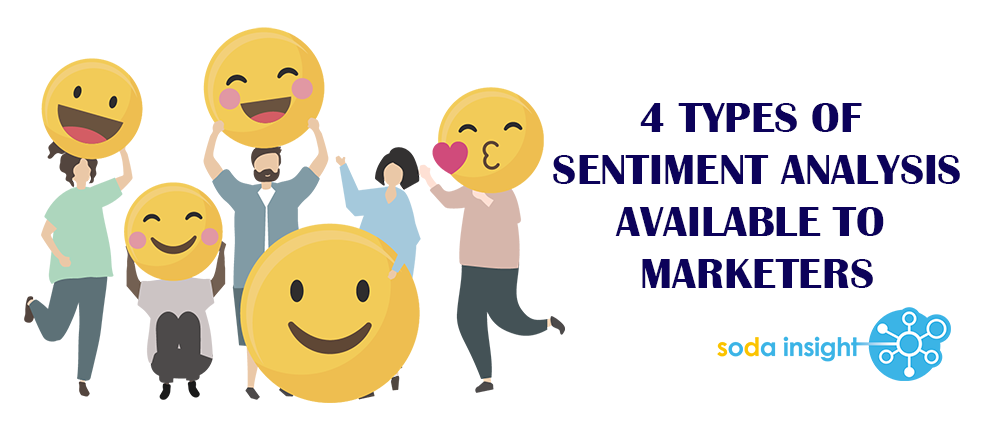
Sentiment Analysis
It also known as opinion mining or emotion AI, refers to the use of natural language processing, text analysis, computational linguistics, and biometrics to systematically identify, extract, quantify, and study affective states and subjective information. Sentiment analysis is widely applied to voice of the customer materials such as reviews and survey responses, online and social media, and healthcare materials for applications that range from marketing to customer service to clinical medicine.
Existing approaches to sentiment analysis can be grouped into three main categories: knowledge-based techniques, statistical methods, and hybrid approaches. Knowledge-based techniques classify text by affect categories based on the presence of unambiguous affect words such as happy, sad, afraid, and bored.

4 types of sentiment analysis available to marketers
TYPE 1 : Prevention and approach, Public Relation crisis
Sentiment analysis allows you to track comments on the Internet in real time and can be a useful method of judgment before a public relations crisis occurs. If you see that the negative emotions on the Internet are approaching, you can take further action.
If you do not have professional and timely handling of dissatisfied customers, they are likely to openly share their dissatisfaction on social media from their negative comments and experiences.
Because the alert of social listening tools notifies immediately when your brand/products is mentioned, you should grasp potential problems and resolve them before the user’s mood rises.
TYPE 2 : Improve service with customer feedback
The analysis you get from the customer may not always be what you want to hear, but just understands what customer’s needs.
Therefore, through sentiment analysis, you can quickly understand and analyze customer opinions and take action on them. And you can also understand their views on your series of advertisements and product launches.

TYPE 3 : Research your competitors
In addition to monitoring the online reviews of your own brand/product, you can also track how competitors are evaluated to understand how your brand can do more. In terms of competitors, positive emotional reviews can help you understand how the other side succeeded, while negative emotional reviews can show where your chances of success are.
For reviewing competitors’ online campaign, can help you determine what needs to be improved and how to improve it. If the other party’s marketing activities are rated higher than their own, you need to check and confirm which strategy is most effective, and use in the next marketing content.
TYPE 4 : Identify influencers
Another benefit of sentiment analysis is that you can discover who has influence in social media from the proposed comments. In the same time, you can find potential partners from positive comments. And try to change the ideas that have a negative evaluation of you. Before to build a partnership to those reviewers, please make sure you review these people. Because their posts should have real responses and actions from subscribers.
Source:
Wikipedia
Affilates.One
Freepik.com
